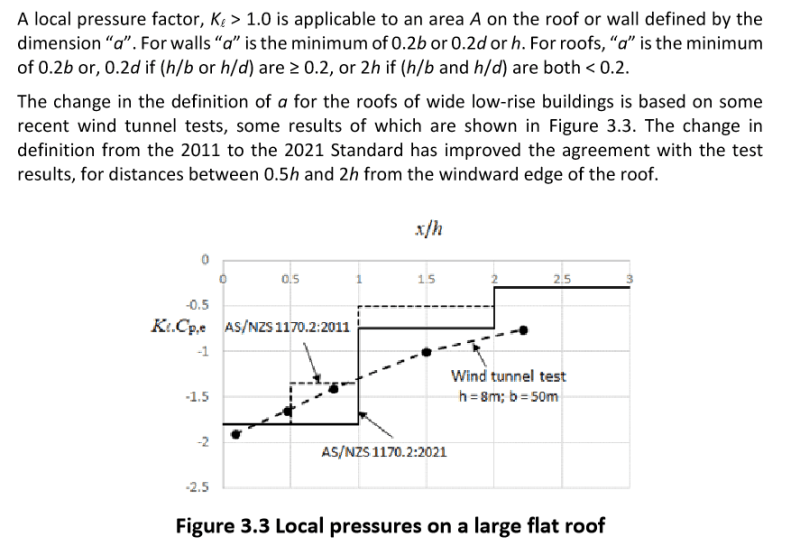Can anyone shed light on this. Could this be a mistake in our code.
Following the rules of 5.4.4 for a large shed. If approximate b=50m and d=50m but h=10, then "a" works out to be 10m. if we increase b and d by .5m, "a" magically jumps to 20m. This large increase makes no sense. This would be almost 1/2 the building length or width.
Reviewing the American code (30.3.-2A ASCE7-22 page 319) "a" for the 50.5m b & d, h=10m would appear to be 1.2xh=12m. Why is there such a major transition in "a" with the new AS1170.2:2024 code vs the old wind code.
Regards,
Following the rules of 5.4.4 for a large shed. If approximate b=50m and d=50m but h=10, then "a" works out to be 10m. if we increase b and d by .5m, "a" magically jumps to 20m. This large increase makes no sense. This would be almost 1/2 the building length or width.
Reviewing the American code (30.3.-2A ASCE7-22 page 319) "a" for the 50.5m b & d, h=10m would appear to be 1.2xh=12m. Why is there such a major transition in "a" with the new AS1170.2:2024 code vs the old wind code.
Regards,

